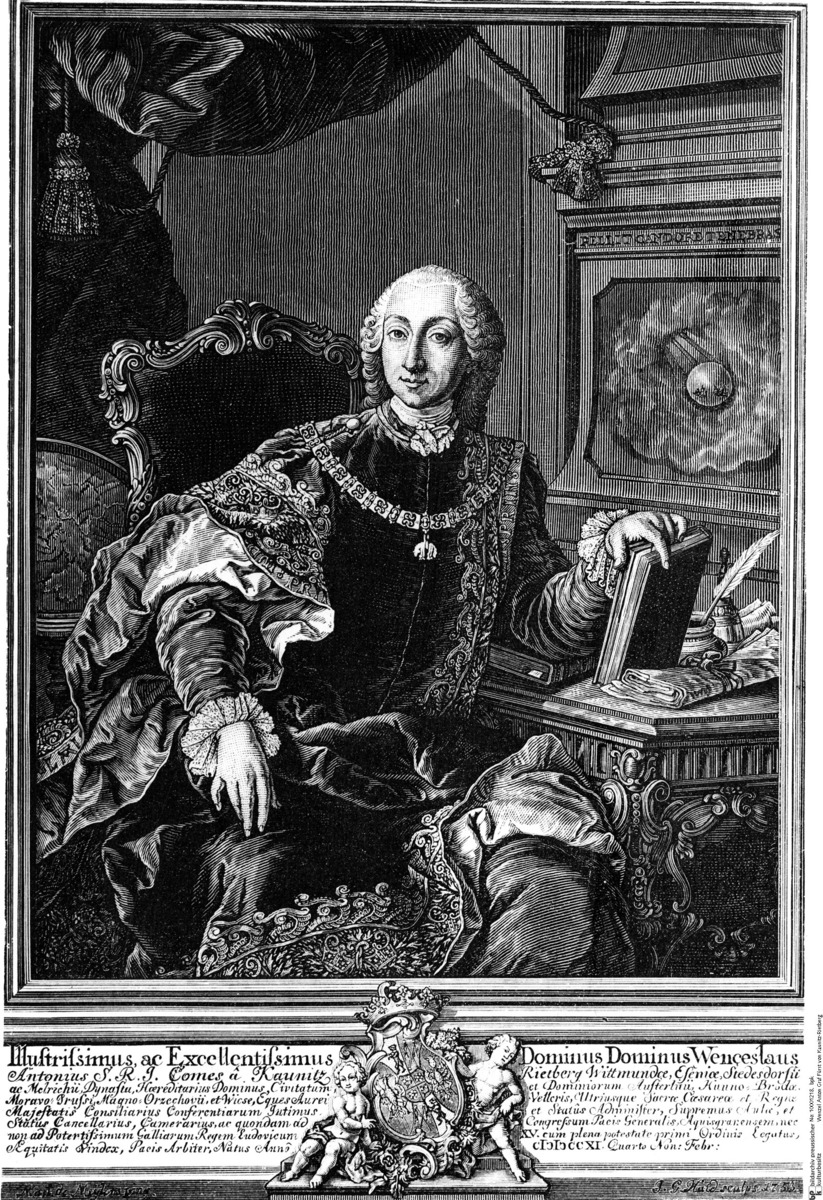Abstract
In the late seventeenth and early eighteenth centuries, the Holy
Roman Empire and its Habsburg ruler, Leopold I (r. 1658-1705), faced the
twin foreign threats of Louis XIV’s (r. 1661-1715) expansionism and the
Ottoman Turks’ advance toward central Europe. France’s expansionist wars
ended after Louis’s death in 1715, and the Turkish threat was contained
by 1718. For much of the rest of the eighteenth century, the foreign
policy of the Holy Roman Empire and Habsburg Austria focused largely on
defending the imperial crown and Austrian territory from Prussia’s
Frederick II (“the Great”) (r. 1740-86). In 1753, the two Habsburg
monarchs, Maria Theresa (r. 1740-80) and her son Joseph II (r. 1765-90),
entrusted newly-appointed Austrian chancellor Wenzel Anton
Kaunitz-Rietberg with the future of their lands. (Kaunitz would remain
in office for nearly four decades, resigning only in 1792.) One of his
first major objectives was to win back Austrian Silesia, which Frederick
II had annexed in the War of the Austrian Succession (1740-48).
Kaunitz’s approach was to maintain an alliance with Russia, shift away
from Austria’s traditional allies – the Netherlands and Britain – and
seek a defensive partnership with its erstwhile archenemy, France. At
the outbreak of the Seven Years War (1756-63), he transformed this
defensive partnership into an offensive alliance. The result was a
momentous “reversal of alliances.” Kaunitz's plan to win back Silesia
ultimately failed, and the Silesian Wars marked the beginning of a
conflict of interest between Austria and Prussia (German dualism) that
would lead, a few years later, to new military confrontations, namely
the War of the Bavarian Succession. Under his chancellorship, Austria
pursued an aggressive policy of territorial annexation, seizing Polish
Galicia (1772), Turkish-ruled Bukovina (1775), and the so-called
Bavarian Inn Quarter (1779). Kaunitz’s “enlightened absolutist”
political thought proved a major influence on Maria Theresa’s and Joseph
II’s reform policies.
